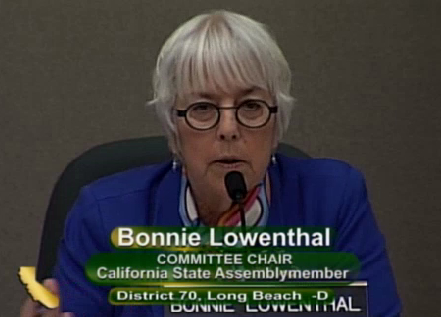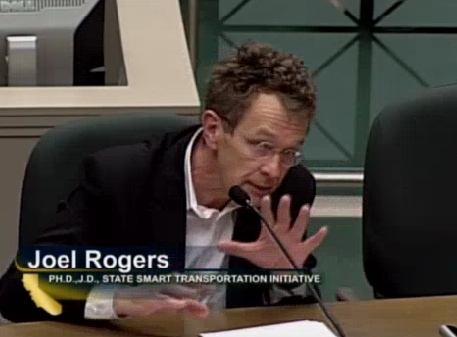It was the California State Assembly's turn to review the recent State Smart Transportation Initiative (SSTI) report on Caltrans at a Transportation Committee hearing Monday.

The discussion played out along the same lines as the Senate Transportation Committee hearing last month, where Professor Joel Rogers, who led the team that produced the report for the California Transportation Agency (CalSTA), presented his findings on the dysfunction at Caltrans.
Rogers drew questions from committee members when he cited the lack of coordination between local transportation planning agencies and Caltrans.
Joan Buchanan (D-Alamo) was defensive of local planning. "Locals need a strong voice in the planning process," she said. "I don't see how the state has the resources or ability to do that kind of planning on the local level."
Rogers was compelled to clarify himself several times. “I do not mean to imply that local control is a bad thing," he said, but the report was “quite critical that the self-help counties build projects and then push all the maintenance onto Caltrans without doing anything like a lifecycle accounting on the actual costs.”

"We just don't think local control has been well managed," he said. "Caltrans needs to give locals the flexibility they need. What we heard over and over in our interviews was, 'It's such a drag dealing with Caltrans, we just try to go around them.' As a state agency you don't want a system that is deliberately at war with itself."
Rogers skewered both Caltrans and the legislature in much the same words he used in the recent Senate hearing, where he criticized Caltrans for its "hypertrophic aversion to risk" that prevents it from being an effective partner. This time he evoked an appreciative, if sheepish, laugh from the committee members when he remarked that they had a hand in making Caltrans the dysfunctional organization it is today.
Two committee members, Assemblymembers Tom Daly (D-Anaheim) and Katcho Achadjian (R-San Luis Obispo), seemed eager to move reforms along. "What's our plan of action? How can we be involved?" asked Daly.
"This needs to be taken care of on a much higher level than the local level," Achadjian said. "Let's not let this end up on a shelf. We need a follow up."
CalSTA undersecretary Brian Annis promised that follow-up. Within two weeks, a vision statement will be completed for Caltrans, he said. This is the first step in the report's Early Action Plan, a set of recommendations from the SSTI team for short-term actions to get reform moving.
CalSTA is also moving forward on the second step, forming eight teams to develop performance measures and action plans. Each team will be headed up by a CalSTA staffer, although team compositions have not yet been finalized. The eight areas of focus are: Performance-Based Management, Smart Investment, Design Manuals and Guidance, Strategic Partnership, Innovation and Risk, Human Resources, and Communication.
Committee Chair Bonnie Lowenthal (D-Long Beach) applauded Caltrans for inviting input on how it can improve its policies and practices. "Asking others to publicly critique one's own operations certainly takes guts,” she said.
TransForm Executive Director Stuart Cohen urged the Assembly to push Caltrans to move forward on one of SSTI's most immediately-achievable steps: relinquishing oversight of bike facilities on urban streets and endorsing the National Association of City Transportation Officials Urban Street Design Guide. "When Caltrans first put in place this requirement that cities and states follow its Highway Design Manual's guidance on bicycle design, it made sense," he said. "There wasn't good practice on rearranging intersections and how to design bike lanes. We needed a standard statewide approach.”
But since then, "We have been bypassed by the rest of the country where cities and states have allowed much more innovation and experimentation, and now it's known how to design good bike facilities," said Cohen.
"The legislature doesn't need to mandate this; Caltrans can do it on their own," he added. "But if they don't, I think the legislature should do something that forces their hand."






